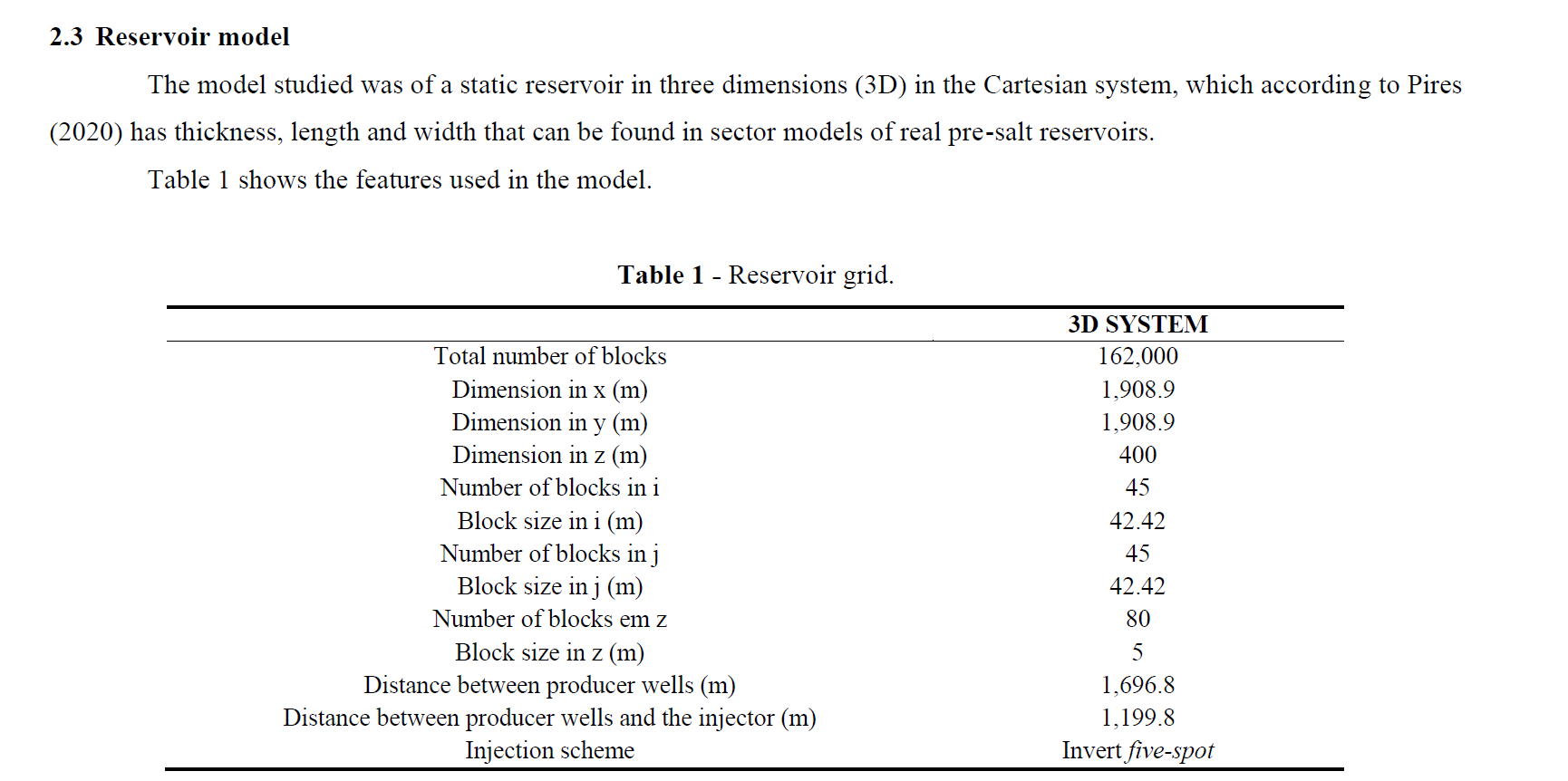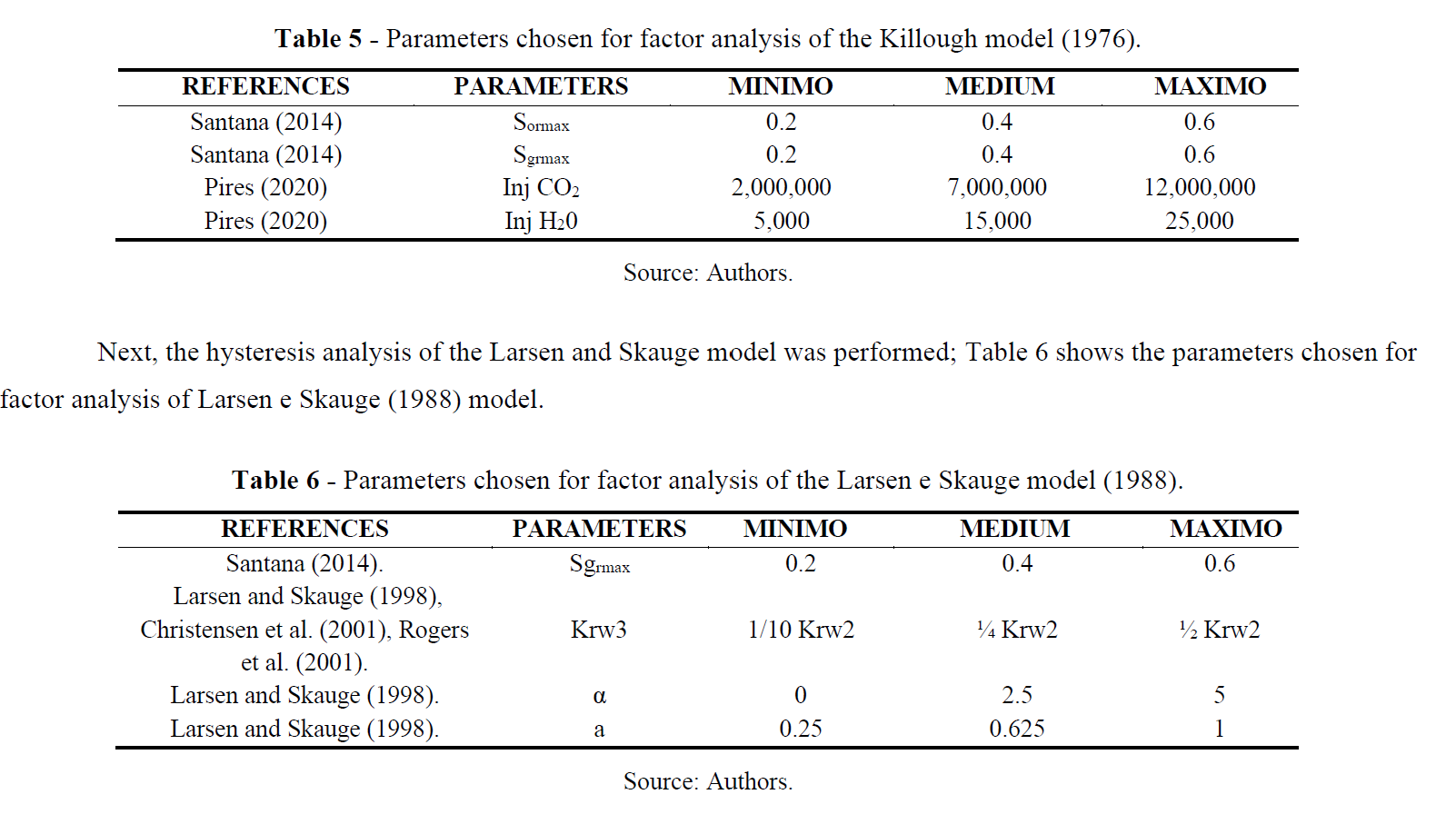Relative permeability hysteresis analysis in a reservoir with characteristics of the Brazilian pre-salt
本文介绍了相对渗透率和毛管力的滞后现象在学术研究中的广泛应用,以及它们对轻质油和高压力储层的影响。研究通过分析商业软件中广泛使用的两个滞后模型(Killough和Larsen和Skauge),来探究利用可混合WAG-CO2开采轻质油储层的方法。该研究采用了一个与巴西盐下地层相似的半机理模型储层,并使用CMG的商业软件进行模拟。研究发现,滞后现象会降低流体的渗流动能力,可能产生两个效果:增加油的局部波及效率,降低注入能力。滞后对提高原油的采收率有帮助,但可能会降低波及效率,从而减少采收率。此外,滞后还会导致气体和水的注入能力变差,但并不妨碍滞后相比没有滞后的情况增加油的采收率。
关键词:盐下;混相WAG-CO2;滞后;相对渗透率
The hysteresis of relative permeability and capillary pressure need to be more widespread in academic studies, in order to understand how they can influence reservoirs with light oil and high pressure. These phenomena become extremely important to have a good prediction of oil production, considering that in many cases, the use of hysteresis in calculations can lead to a better prediction of oil recovery, allowing the exploration of certain fields. Thus, this study had as main objective the analysis of two hysteresis models (Killough and Larsen and Skauge) widely used in commercial software, in order to investigate the behavior of a light oil reservoir using a miscible WAG-CO2 process. Thus, to achieve this goal, a semi-synthetic reservoir, with characteristics similar to those found in the Brazilian pre-salt, was considered and was modeled using commercial software from CMG. Hysteresis reduces fluid permeability, which can generate two effects: increased local sweep efficiency of the oil and loss of injectivity. The former effect contributes to increased oil recovery, while injectivity loss can decrease oil sweep, reducing oil recovery. Furthermore, this work found that hysteresis can cause loss of gas and water injectivity, however this did not prevent hysteresis from increasing oil recovery compared to the case without hysteresis.





